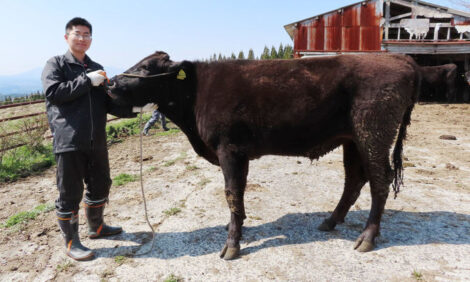



Remember Calf Health After Blizzard
US – Prolonged and devastating weather events can impinge on the immune systems of surviving cattle, South Dakota ranchers have been warned.Two extension specialists from South Dakota State University have warned about the impact that extended periods of stress can have on cattle, particularly youngstock.
Early Blizzard Hits
This comes after the snow storm which raged from 4 to 7 October in which an estimated 75,000 cattle perished as they were caught out on summer pastures.
An early onset of severe exposed cattle before they were moved to more sheltered grazing areas and had developed winter coats.
In the aftermath, the South Dakota Stockgrowers Association has reassured emotionally drained ranchers that, ‘self- worth is not tied to net worth’ and that in no way does a freak storm mean you are a bad stockperson.
Watch Out for Calf Health
With such widespread losses, cow/calf field specialist Warren Rusche and associate professor and extension veterinarian Russ Daly have urged ranchers to focus on the stock left and to be particularly watchful of young calves in the wake of the blizzard.
*
"Long-term stress can have the effect of shifting the immune system towards production of antibodies and away from cell-mediated responses"
They have advised that a 7 to 14 days rule is best taken when dealing with current stress-related health problems.
Cortisol levels increase in the bloodstream when animals feel stressed, which has, ‘profound effects on the immune system’, according to Professor Daly.
“Long-term stress can have the effect of shifting the immune system towards production of antibodies and away from cell-mediated responses. In practical terms, this means that the body has less of an ability to respond to diseases caused by viruses," explained Professor Daly.
He advised ranchers to look for Infectious Bovine Rhinotracheitis, also known as ‘red nose’, Bovine Respiratory Syncytial Virus and Bovine Viral Diarrhea Virus now as time wears on after the blizzard.
“Respiratory diseases in cattle generally have an “incubation period” of 7-14 days,” he added.
“Therefore, ranchers might expect that cattle affected by the blizzard could break with these illnesses within two weeks after.”
Additional immunity complications arise from the timing of the blizzard for spring calvers, according to cow/calf expert Warren Rusche, who warned that vaccination procedures will be disrupted.
Mr Rusche said: “Herds were in various stages of the process, anywhere from having calves weaned already to calves having their first pre-weaning vaccination, to calves that had not had pre-weaning vaccinations at all.”
Again, ranchers should be applying a 7 to 14 day rule following the blizzard to allow calves immune systems to recover before administering vaccines.
“Vaccinations will be less effective in cattle that are still under the influence of cortisol due to stress,” explained Mr Rusche.
Furthermore, weaned calves should be monitored for bloody stools, dehydration and depression as may be more susceptible to coccidiosis.
Professor Daly said: “Prompt identification of affected calves and treatment with individual or feed-based medications is important.
“Ranchers should consult with their veterinarian whether feed or water-grade antibiotics, especially in weaned calves, would be appropriate for any of these conditions.”
Effects on Stockers and Feeders?
Concerns extend beyond the youngstock and further down the line as feeders and backgrounders are presented with calves that have gone through extreme hardship.
*
"Consider delaying marketing until the calves have had time to recover from the added stress load."
Mr Rusche’s advice to people buying calves that have lived through the story is simple: minimise stress and provide as much care as possible.
“The blizzard also coincides with the traditional marketing window for spring calves,” he said. “If at all possible, ranchers should consider delaying marketing until the calves have had time to recover from the added stress load.”
“Feeders should consult with their veterinarian concerning timing of arrival vaccinations and possible preventative strategies,” advised Mr Rusche.
Tidying Up
At a business level, financial and emotional help is at hand for affected ranchers, some of which have reported a 70 per cent loss toll.
The state’s Animal Industry Board has said that dead animals can be disposed of through burial, burning or through licensed rendering plants.
Carcasses must be buried at least four feet deep advice has been issued on proximity to watercourses and wetlands. The board prescribes that that carcasses of animals which have died from noncommunicable causes must be disposed of within 36 hours.
Also, motorists have been cautioned about the carcass disposal activity present on county and state highways as clean-up efforts kick in.
This was followed yesterday by news of future government involvement in the state by Agricultural Secretary Tom Vilsack yesterday when he said that the best data must be gathered to so that 'when and if' Congress retroactively reinstates Livestock Disaster Assistance Programmes, it can do so properly.
Mr Vilsack stated the intention of US Department of Agriculture under secretary Michael Scuse to visit South Dakota and get first hand information.
Support can be offered through the Black Hills Area Community Foundation.
Michael Priestley
News Team - Editor
Mainly production and market stories on ruminants sector. Works closely with sustainability consultants at FAI Farms



